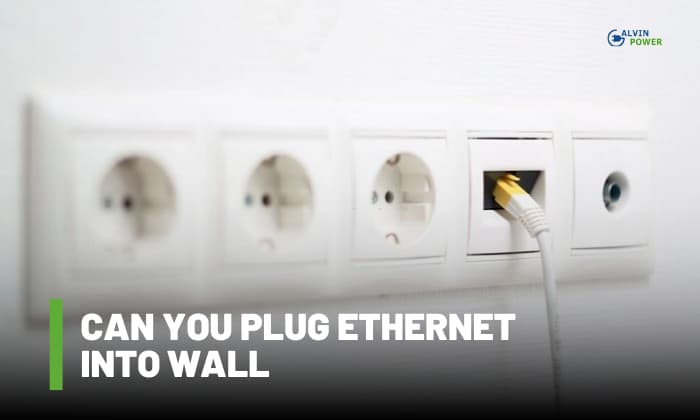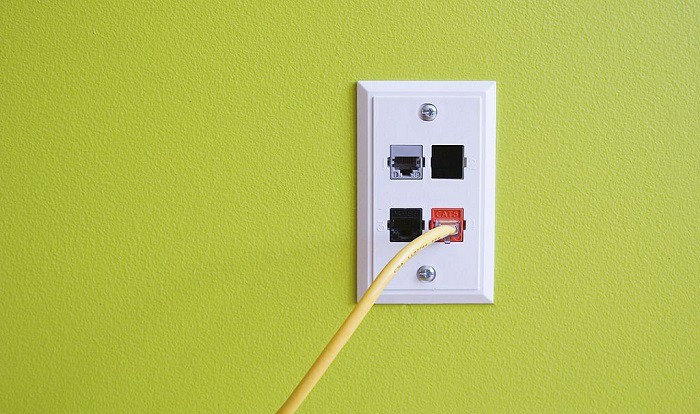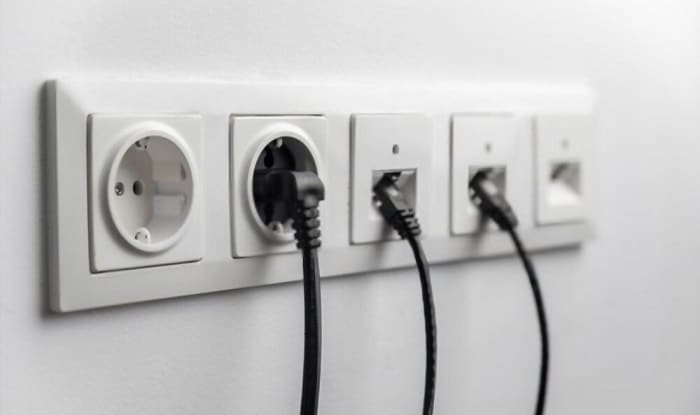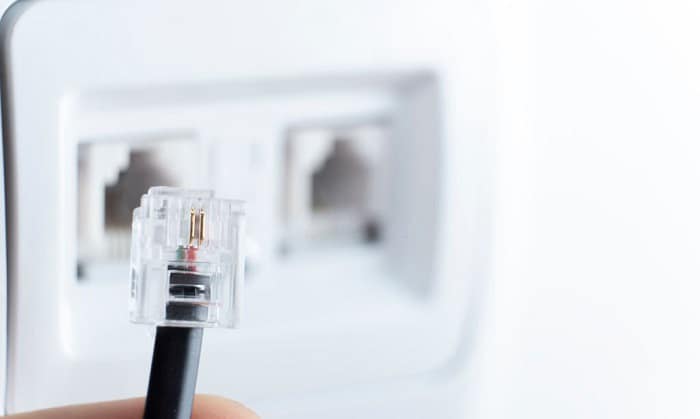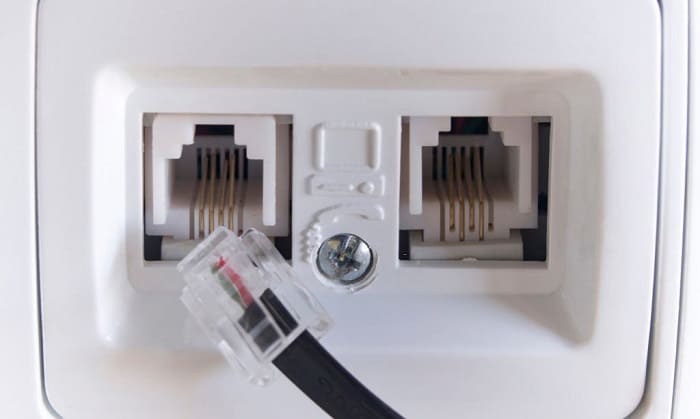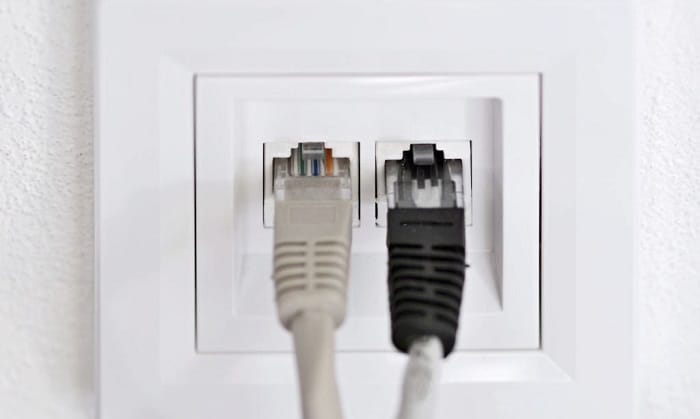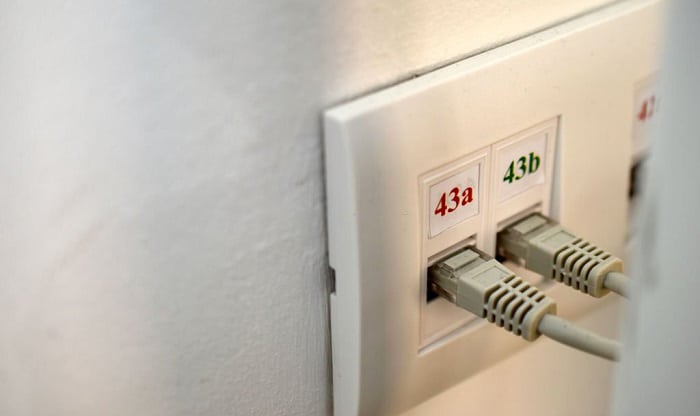Running a wired connection from the modem/router to your computer is often a better choice than using Wi-Fi. But now you’re wondering, can you plug Ethernet into wall?
You can plug an Ethernet cable into the wall. But you still need to comply with certain requirements, such as a modem or router, before your connected devices can have an Internet connection.
Also, bear in mind that there are risks involved when trying to plug an Ethernet cord into the wall. So keep reading to dive deeper into this subject matter.
Table of Contents
Can I Plug My Ethernet Cable Into The Wall?
Plugging an Ethernet cable in wall seems like a reasonably straightforward affair. But even if there’s an Ethernet port or outlet, directly plugging the cord into it can be risky.
Risks of Plugging Ethernet Into Wall
Take note of the risks involved if you decide to plug Ethernet directly into wall. It is the first step to ensuring a stable hardwired Internet connection for your devices. Some of these dangers are:
- The Ethernet cable can become an inconvenience, particularly if the Internet cable from wall to modem is quite far. Your laptop or computer must also be near the Ethernet cord, which may restrict their portability.
- Extensive home renovations might be necessary. This endeavor may require you to spend a significant amount of money to complete.
- The setup may require two cables to jut out from the wall. Aside from the Ethernet cable, a power cord may also come from the wall, causing extra inconvenience.
- The typical Ethernet cables are too thick for regular outlets. You need an RJ45 port to plug them into the wall, but even then, this setup opens your devices to security risks like hacking.
How to Connect an Ethernet Cable to the Wall?
Minimize the risks involved in taking advantage of an Ethernet cable plug into wall by following proper installation protocols. Follow these steps to ensure you’re making the hardwired Internet connection correctly and safely.
Step-By-Step Guide
1. Use a stud finder to search for a spot that’s fairly near an electrical outlet.
2. Mark the location with a pen, pencil, or marker.
3. Place the Ethernet outlet’s mounting bracket onto the wall.
4. Trace the bracket’s placement.
5. Turn off the power of the room which will have the Ethernet cable at the main circuit breaker panel.
6. Use a utility knife or hand saw to cut around the bracket’s outline.
7. Run the Ethernet cable from the modem or router into the new hole in the wall.
8. Install the in-wall Ethernet bracket while following the product’s guidelines.
9. Use wire cutters to cut the Ethernet cable to size.
10. Use a wire stripper to strip the ends of the Ethernet cable.
11. Connect the stripped wires to an RJ45 jack.
12. Attach the RJ45 assembly to the wall plate and secure it into the wall.
Once finished, test Ethernet port in-wall by connecting your computer to it with another networking cable.
Tips to Plug Ethernet Into Wall
Consider these suggestions as you connect Ethernet cable to wall socket:
- The location of the in-wall Ethernet port should be as close to the Internet-providing device as possible.
- If you’re installing more than one port, wrap the Ethernet cables with tape.
- Ensure that you’re using the correct RJ45 port to avoid size and connection problems.
Pros And Cons Of Plugging Ethernet Into Wall
Opting to use an Internet wall cable has its advantages and drawbacks. Some of these pros and cons are:
- A dedicated connection. Hardwiring your computer or device to an Ethernet port in wall reduces possible interference.
- Faster speed. It’s possible to obtain 10 Gbps connections with Ethernet cables and only about 1,000 Mbps if you use Wi-Fi.
- Excellent reliability. The small number of devices sharing the same hardwired connection means the wired network has fewer chances of disruptions.
- Limited flexibility. The connected device is dependent on the length of the computer Internet cable.
- Safety hazard. Passersby might trip on the exposed wire.
- Higher-than-average chance of breaking. The exposed cord might snag against objects.
What Causes Ethernet Plugged Into Wall to Not Work?
If you completed the installation and your connected device isn’t receiving an Internet connection, check the wires and fasteners. A broken or malfunctioning wire may cause intermittent or no Internet for the hardwired device.
Also, the in-wall Ethernet assembly should have a stable and secure connection with the Internet-providing device. So check if the wire connected from the jack to other locations is secure.
Don’t forget to inspect the modem or router and see if it receives a stable Internet connection. Investigate the wire that goes from the modem or router into a phone jack if your device still doesn’t receive a good Internet signal.
If you’re unsure, plug your computer directly in to a modem with an Ethernet cable. Then, open a website using your preferred browser to check if your computer can receive an Internet connection from the modem.
Frequently Asked Questions
How Do Ethernet Wall Jacks Work?
Ethernet wall jacks usually work in pairs. One unit connects to a modem or router through an Ethernet cable. Then, the other module goes into another outlet.
This other unit then connects to your computer. Both wall jacks send and receive data by using the property’s electrical wiring setup.
Can You Run An Ethernet Cable From A Wi-Fi Extender?
It’s possible to plug an Ethernet cable Into a wifi extender. But you still have to consider the product’s capabilities and limitations.
Certain Wi-Fi extenders have local area network (LAN) ports that you can use for the Ethernet cable. On the other hand, some models don’t have this feature.
Conclusion
At this point, you should now have the answer to your initial inquiry, “can you plug Ethernet into wall?” Although you can achieve this goal, you still need to use the correct equipment and materials to complete the setup.
Also, pay attention to your Ethernet cord. Ensure that the exposed cable won’t become a health hazard by neatly tucking it away. Still, be careful when storing the wire as you may damage it and ruin your Internet connection.

I am Edwin Jones, in charge of designing content for Galvinpower. I aspire to use my experiences in marketing to create reliable and necessary information to help our readers. It has been fun to work with Andrew and apply his incredible knowledge to our content.

